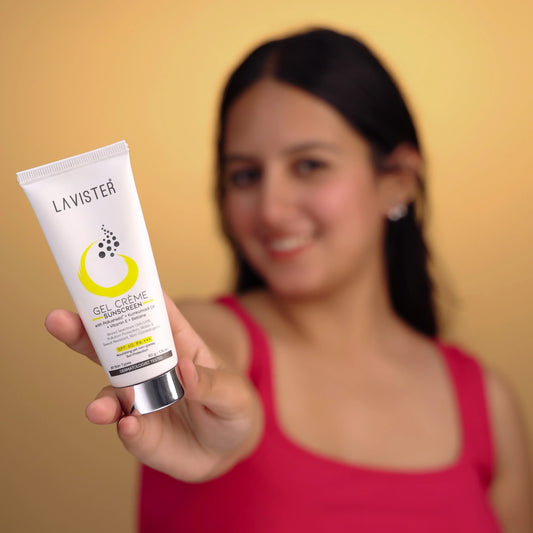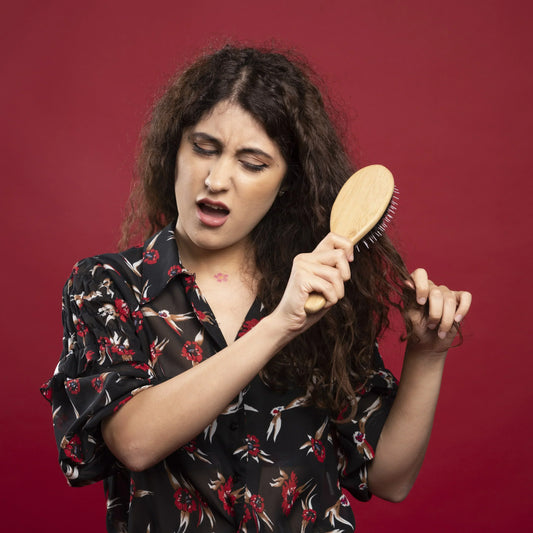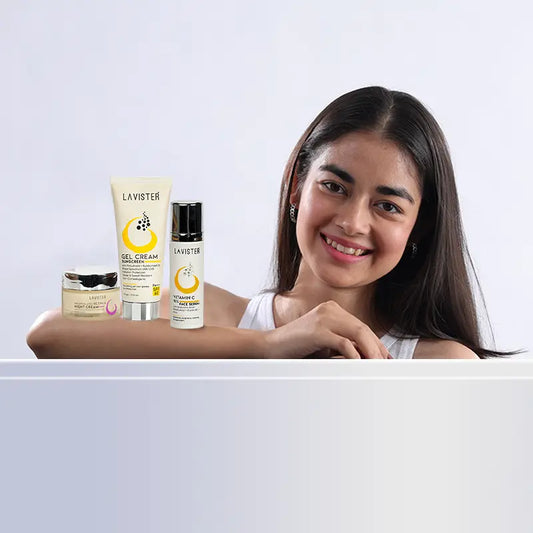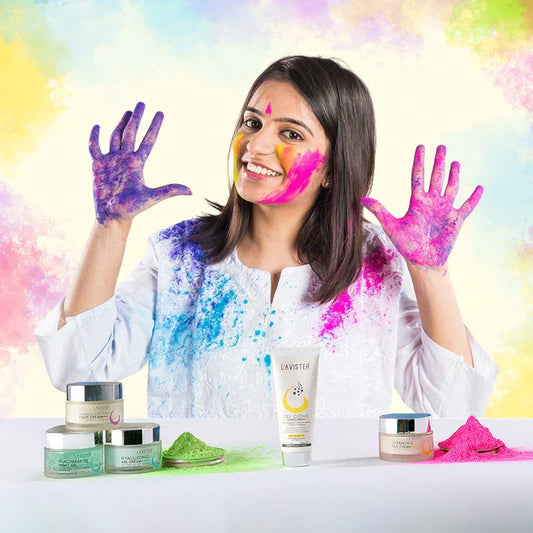Your Go-To Guide For Healthy, Dandruff-Free Hair
White snow on your black sweater, but it’s not Christmas yet! Well, it must be your old companion: dandruff.
Dandruff is one of those annoying scalp problems that most of us have dealt with at some point. Those pesky white flakes on your shoulders? Not exactly a confidence booster. Dandruff is a sign of an unhealthy scalp that needs to be addressed. If you have it, don’t worry, you are not alone in this.
Good news: there are plenty of solutions!
Here is a complete guide to take care of your dandruff problems. Understand what dandruff is, why it happens, and how you can tackle it with the proper remedies, routines, and lifestyle changes.
What Is Dandruff?
Dandruff is a common scalp condition in which the scalp sheds dead skin cells more rapidly than usual. The result is white or yellow flakes on the hair and scalp, often accompanied by itching or irritation. Dandruff is not contagious or dangerous to health, but it can still be frustrating to deal with.
Why Does Dandruff Happen?
Contrary to popular notion, dandruff is not caused by poor hygiene when salt is added to your hair or when you go out too much. In fact, there are several actual reasons for dandruff to occur:
1. Yeast Overgrowth
A type of yeast called Malassezia furfur naturally lives on your scalp and harmlessly feeds off skin oil. However, its overgrowth can irritate the skin and cause an inflammatory reaction that speeds up the buildup of skin cells. This leads to flaking, which is called dandruff.
2. Dry Scalp
A dry scalp can not always cause dandruff, but excessive dryness can irritate the skin and make it itchy. A lack of moisture in the scalp can be the problem, which goes away with proper hydration. Dandruff from a dry scalp is especially common in colder weather or low-humidity conditions.
3. Too much buildup
Over-oiling is not advisable to get rid of dandruff. An oily scalp can also cause dandruff by adding grease and extra buildup that overfeeds the scalp bacteria. People with oily skin types also get dandruff problems, especially when the buildup is too much.
3. Seborrheic Dermatitis
This skin condition causes redness, inflammation, and flaky patches. It’s often linked to excessive oil production and yeast overgrowth.
4. Other Triggers
- Stress: Stress weakens your scalp's defences.
- Poor Diet: Diets high in sugar and saturated fats can exacerbate dandruff.
- Harsh Products: Strong shampoos and styling products can strip the scalp of natural oils, causing dryness.
- Hygiene: Infrequent washing can allow oils and dead skin to accumulate, worsening flakes.
How To Get Rid Of Dandruff
If you’ve got dandruff problems and understand the cause, you can quite manage it. Here’s your ultimate guide to saying goodbye to dandruff:
1. Use an Anti-Dandruff Shampoo
Using a targeted dandruff control shampoo is the first step. Look for active ingredients like:
- Piroctone Olamine: Fights dandruff-causing yeast.
- Ketoconazole: Effective against fungal infections.
- Zinc Pyrithione: Reduces yeast growth and soothes irritation.
Massage the shampoo into your scalp and leave it on for 3–5 minutes before rinsing. For best results, use it at least twice a week.
For those searching for the best anti-dandruff shampoo in India, ensure it suits your hair type and has dermatologist-recommended ingredients.
2. Try a Scalp Scrub
Exfoliating your scalp can help remove dead skin cells, product buildup, and excess oil. A scalp scrub once a week can keep your scalp clean and healthy.
3. Home Remedies for Dandruff
If you prefer natural solutions, these remedies can work wonders:
- Tea Tree Oil: Mix a few drops with a carrier oil like coconut or jojoba oil. Massage into your scalp and leave for 30 minutes before rinsing.
- Apple Cider Vinegar: Mix equal parts vinegar and water. Apply to your scalp, leave for 15 minutes, and rinse. It helps balance your scalp’s pH.
- Aloe Vera: Apply fresh aloe vera gel to soothe irritation. Leave it on for 30 minutes before rinsing.
- Coconut Oil: Warm the oil, massage it into your scalp, and leave it overnight for deep hydration.
4. Follow a Consistent Hair Care Routine
Here’s a simple 4-step routine to keep flakes away:
Keeping dandruff at bay requires a consistent and effective hair care routine. Here’s a simple four-step plan to help you:
Step 1: Scalp Scrub
Begin your week with a scalp scrub. Exfoliating your scalp removes product buildup, oil, and dead skin cells. This helps your scalp breathe and creates the perfect base for other treatments.
Use a gentle scrub to avoid irritation.
Step 2: Anti-Dandruff Shampoo
Wash your hair with a specialised anti-dandruff shampoo. These shampoos contain active ingredients to fight the root cause of dandruff, such as fungus or excess oil. Massage the shampoo thoroughly into your scalp to let the ingredients work.
Rinse well to ensure no residue is left behind.
Step 3: Conditioner
After shampooing, apply a nourishing conditioner. Focus on hydrating your scalp and hair to prevent dryness. Choose a conditioner designed to complement your anti-dandruff shampoo. It helps restore moisture and keeps your hair soft and manageable.
Step 4: Scalp Serum
Complete your routine with a leave-on scalp serum. These serums are designed to control dandruff and prevent flakes from returning.
Apply it directly to your scalp and gently massage it in. No rinsing is needed, and it works throughout the day to keep your scalp healthy.
Choose a hair serum product that suits your skin type and nourishes your hair from within. Hair serum balances the pH and maintains hair's natural shine.
Why This Routine Works
This 4-step routine targets dandruff at every stage. Exfoliating, cleansing, hydrating, and protecting your scalp ensures lasting results. With regular care, your scalp stays healthy, and your hair looks its best.
Stick to this routine consistently to see visible improvements!
5. Lifestyle Tweaks for a Healthy Scalp
Your overall lifestyle plays a big role in scalp health. Here’s what you can do:
- Stay Hydrated: Drink plenty of water to keep your scalp hydrated.
- Eat Well: Incorporate foods rich in vitamins and healthy fats like nuts, fish, and leafy greens.
- Manage Stress: Find ways to relax. Meditation, yoga, or even a good book can help.
- Avoid Overstyling: Limit the use of heat tools and heavy styling products, as they can irritate your scalp.
When to See a Dermatologist
Sometimes, dandruff needs professional help. If you notice:
- Persistent flakes despite trying multiple remedies.
- Severe itching or redness.
- Hair loss or lesions on your scalp.
Consulting a dermatologist can help you get a tailored treatment plan, which may include prescription shampoos or creams.
Final Thoughts
Dandruff might be frustrating, but it’s entirely manageable. Whether you choose a dandruff removal shampoo, natural remedies, or a consistent routine, the key is to stick with it.
Don’t let those pesky flakes get the best of you. With a little care and patience, you can have a healthier, flake-free scalp and the confidence to flaunt your hair wherever you go.
Say goodbye to dandruff and hello to a fresh, clean scalp!
Say Goodbye to Dandruff with Lavister's Anti Dandruff Shampoo!
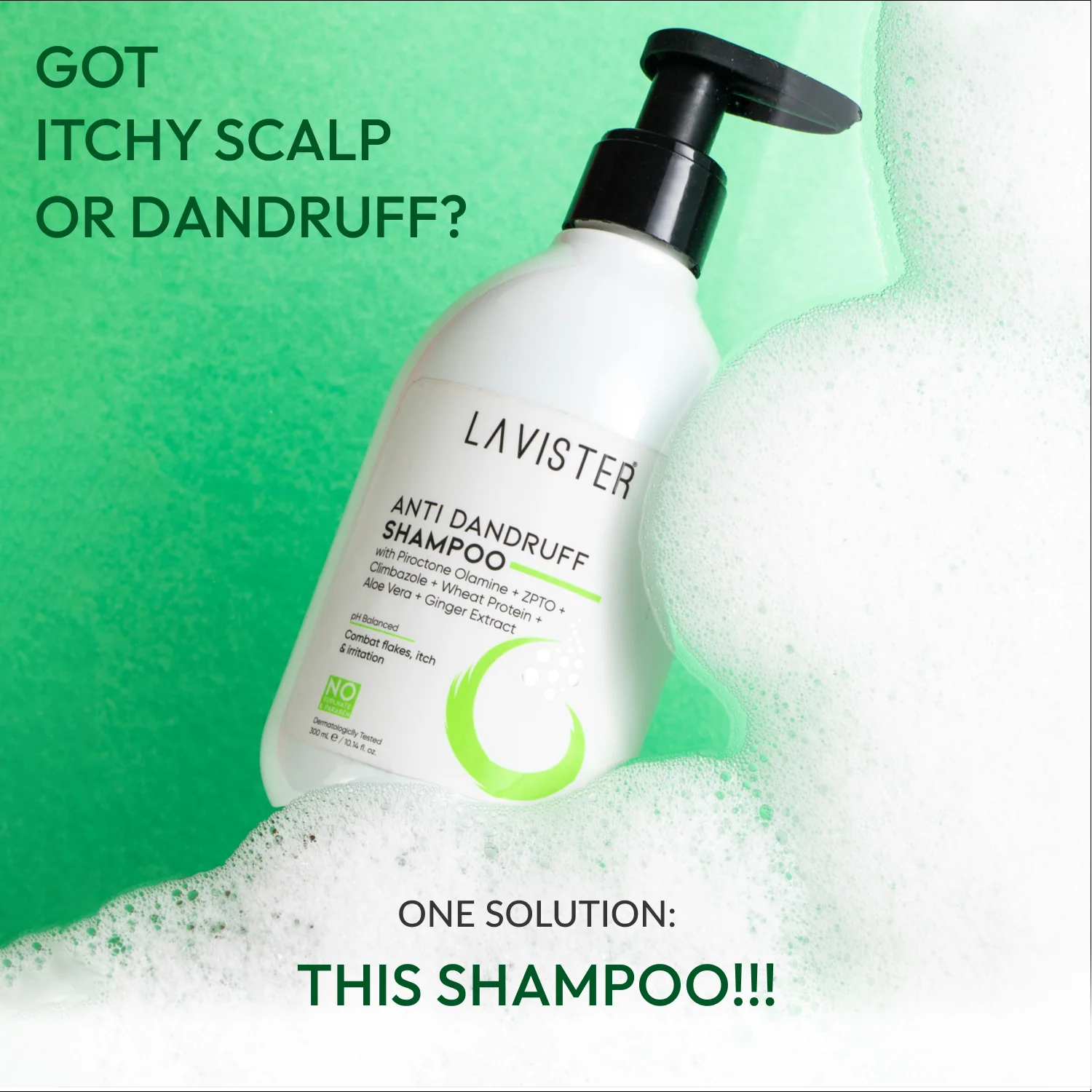
Tackle dandruff at the root and enjoy soft, shiny hair with Lavister's Anti Dandruff Shampoo. Packed with powerful ingredients like Piroctone Olamine, Climbazole, ZPTO, Wheat Protein, and Aloe Vera, this gentle yet effective formula soothes dryness, eliminates flakes, and nourishes your scalp.



